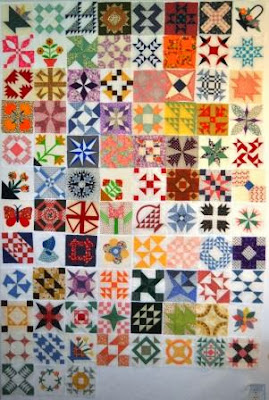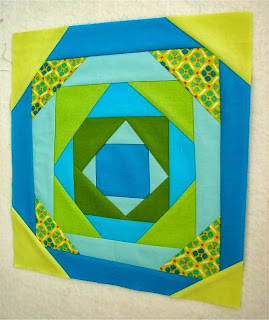I have posted 134 blocks by Nancy Cabot thus far. I plan to continue posting Nancy's blocks
as I have been when I have more time to devote to it again. There may not be daily posts again until November and even then they may not be every day.
Here's a quick picture of my design wall showing the blocks I have actually made. How many have you made? Enough to make a quilt yet?
Though I haven't posted in awhile, I have been playing around with some ideas on how to put these blocks together into a sampler quilt. I think it's best to use sashing between the blocks because some of the blocks have many seams at the edge of the block that would make it a little hard to sew directly to another block. I think a sashing strip will help stabilize those type of edges also. I'll show my ideas in a future post so stay tuned.
If you have made just a few blocks or have a few favorites you'd like to try but don't really want to make a quilt, use them in other projects.
Make a few of your favorite blocks into a table runner or a wall hanging. Make a single block into a pot holder, coaster or mug rug. Make a block and add a border to make trivet. Might make great Christmas gifts!
What other ideas do you have? If you have used any of these blocks in a project, send me a photo to share with others. You can email me at candace@doublenickelquilts.com




+(Small).jpg)









